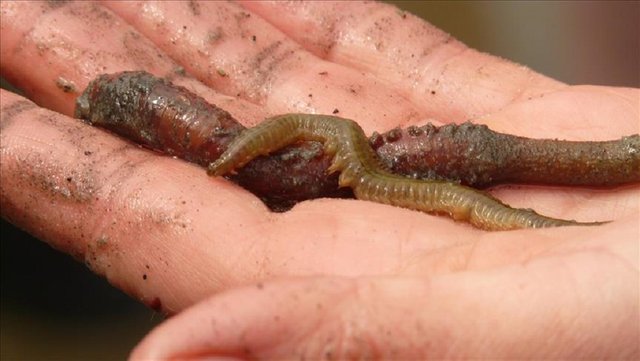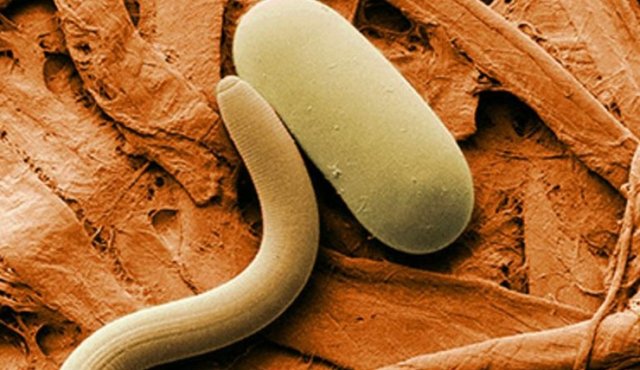42 thousand years later, they were awakened from sleep/42 Bin Yıl Sonra Uykudan Uyandırıldılar [Turkish and English]
Rusya'nın Yakutya bölgesinde donmuş toprakta bulunan iki yuvarlak solucan bilim adamı tarafından çözüldü ve hayata döndü. Biri 42 bin ve 32 bin yaşında olan solucanlar, gezegendeki en eski hayvanlar olarak kabul edilir.
Yakutistan'da 300 solucandan sadece 2 dişi kurtun yaşam belirtilerini gösterdi. Rus bilim adamlarının ABD'de Princeton Üniversitesi ile işbirliği içinde yaptıkları bir araştırmaya göre, 32 bin yıl önce ve 42 bin yıl önce, donmuş solucanlar, radyokarbon testleri sonucunda yeniden canlandırıldı. Solucanlardan biri bir sincap yuvasında, diğeri Alazeya nehri yakınlarında bulundu.
Pleistosen'den (2 milyon 588 bin ila 11,700 yıl öncesine ve dünyanın son kez tekrarlanan buzul döneminin jeolojik yaşına) kadar dondurulmuş olan iki eski nematod (yuvarlak solucan) en uzun ömürlü olanlardır. Hayatta kalan solucanlardan biri, 41 milyon yıl önce, 32 bin yıl önce sona ermiştir.

Kaynak
Rusya'nın Yakutia bölgesinden getirilen iki solucanın hareket etmeye ve beslemeye başladığı belirtildi. 300 kadar eski yuvarlak solucanın ortadan kalktığı, ancak sadece bu nedenle iki kadın yuvarlak kurtların yaşam belirtileri gösterdiği belirtilmiştir. Araştırmanın yazarları, “çok hücreli organizmaların uzun süreli kriyobiyoz kapasitesine sahip olduklarını gösteren ilk göstergeyi gerçekleştirdik” ifadelerini kullandılar. Bilim adamları, "Bizim verilerimiz, çok hücreli organizmaların, doğal donmuş bir ortamda hayatta kalabilmek için uzun ömürlü (onbinlerce yıl) kriyobiyoz" yeteneğine sahip olduklarını göstermektedir. Bilim adamları, bu canlıların uyum yeteneğine yönelik çalışmanın, kriyobiyoloji ve astrobiyoloji gibi bilim dallarındaki önemli çalışmalara dayandığını belirtmişlerdir.
Dünyadaki en dayanıklı mikroskobik hayvan olan Tardigrad gibi canlılar ve radyasyona, donma ve kaynamaya maruz kalanlar aşırı şartlarda hayatta kalmazlar. Bunun yerine Cryptobiosis adlı yarı ölü bir aşamaya giderler. Bu aşamada, kış uykusuna benzer şekilde, metabolik hız neredeyse sıfırdır. Kriptobiyozdaki en belirgin değişikliklerden biri programlanmış su kaybıdır. Bu şekilde, vücut sıcaklığının düşük sıcaklıklarda soğutulması nedeniyle vücutta hasar oluşması önlenir. Tardigrads, hücrelerini suya atıyor ve olası kristalleşmeyi engelliyor. Bu direnç mekanizması Kriyobiosis olarak da adlandırılır.

Kaynak
Two round worms found in frozen soil in the Yakutia region of Russia were resolved by scientists and returned to life. Worms, one of which is 42 thousand years old and 32 thousand years old, are considered to be the oldest animals on
the planet.
Only 300 worms in Yakutistan showed signs of life of only 2 female worms. According to a study conducted by Russian scientists in cooperation with the Princeton University in the USA, frozen worms, 32 thousand years ago and 42 thousand years ago, were revived as a result of radiocarbon tests. One of the worms was found in a squirrel's nest while the other was discovered near the Alazeya River
Two ancient nematodes (round worms) that have been frozen since the Pleistocene (2 million 588 thousand to 11,700 years ago and the geologic age of the world's last repeated glacial period) are the animals that have lived the longest. One of the two surviving worms, 41 million years ago, reached the end of 32 thousand years ago.
It was stated that two worms brought from Russia's Yakutia region started to move and to feed. It has been stated that about 300 ancient round worms have disappeared, but only for that reason, two female roundworms show signs of life. The authors of the study used expressions that "we have achieved the first indication that multicellular organisms exhibit long-lasting cryobiosis capability". "Our data shows that multicellular organisms are capable of long-lasting (tens of thousands of years) cryobiosis to survive in a naturally frozen environment," scientists said. Scientists have stated that the work on the ability of these creatures to adapt can be based on important work in science branches such as cryobiology and astrobiology.
Living creatures like Tardigrad, the most durable microscopic animal in the world and based on radiation, freezing cold and boiling, do not survive on extreme conditions. Instead they go to a semi-dead stage called Cryptobiosis. In this phase, similar to winter sleep, the metabolic rate is almost zero. One of the most obvious changes in cryptobiosis is the programmed loss of water. In this way, damage to the body caused by the cooling of the body water at low temperatures is prevented. The Tardigrads are throwing off the water in their cells, preventing possible crystallization. This resistance mechanism is also called Kriyobiosis.
Congratulations @akineton! You have completed the following achievement on Steemit and have been rewarded with new badge(s) :
Click on the badge to view your Board of Honor.
If you no longer want to receive notifications, reply to this comment with the word
STOPTo support your work, I also upvoted your post!
Bu yazı Curation Collective Discord Sunucusunda küratörlere önerilmiş ve manuel inceleme sonrasında @c-squared topluluk hesabından oy ve resteem almıştır.
This post was shared in the #turkish-curation channel in the Curation Collective Discord community for curators, and upvoted and resteemed by the @c-squared community account after manual review.